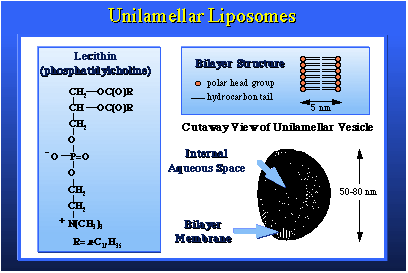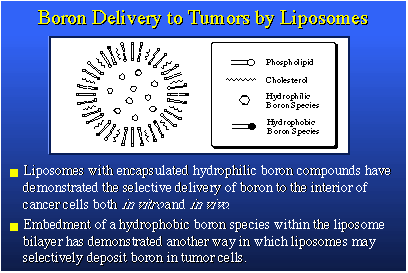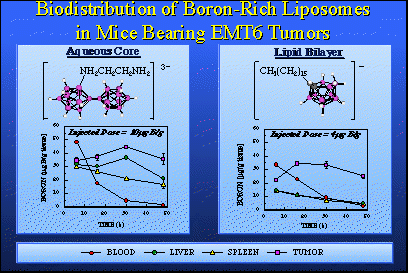|
|
Email: mfh@chem.ucla.edu |

Item two is DNA-binding phosphate diesters based upon carborane chemistry. These are DNA binding because we fix them up with chemical hooks, so to speak, which selectively seek out and bind the tumor cell's DNA. The liposome is a tiny vesicle, a spherical shell composed of a phospholipid bilayer, derived from a molecule which has a water-soluble end and two greasy, water-insoluble tails that tend to associate with each other, leaving the polar ends to associate with water. The unilamellar liposome has water on the inside, water on the outside, and it swims in water. It is quite small, less than a hundred nanometers in diameter, or about one one-thousandth the diameter of a red blood cell. Yet it has this beautifully defined structure. 
The compounds we wish to deliver to cancer cells can be placed inside the liposome in the his aqueous center. These would be water-soluble compounds that are hydrophilic. Compounds that are hydrophobic or lipophilic can be placed in the bilayer. They can actually be dissolved in the bilayer lipid material and carried in that fashion. We therefore have two compartments in the normal unilamellar liposome for the transport of boron compounds. This is a slice of a liposome, showing you the bilayer with the aqueous center and water-soluble borane species dissolved in water on the inside. In the bilayer, the dark spots represent boron species containing a hydrophobic tail, which allows them to be incorporated in the bilayer. Liposomes having materials on the inside have been shown to deliver those materials to the interior of cancer cells in both in vitro and in vivo experiments. 
|